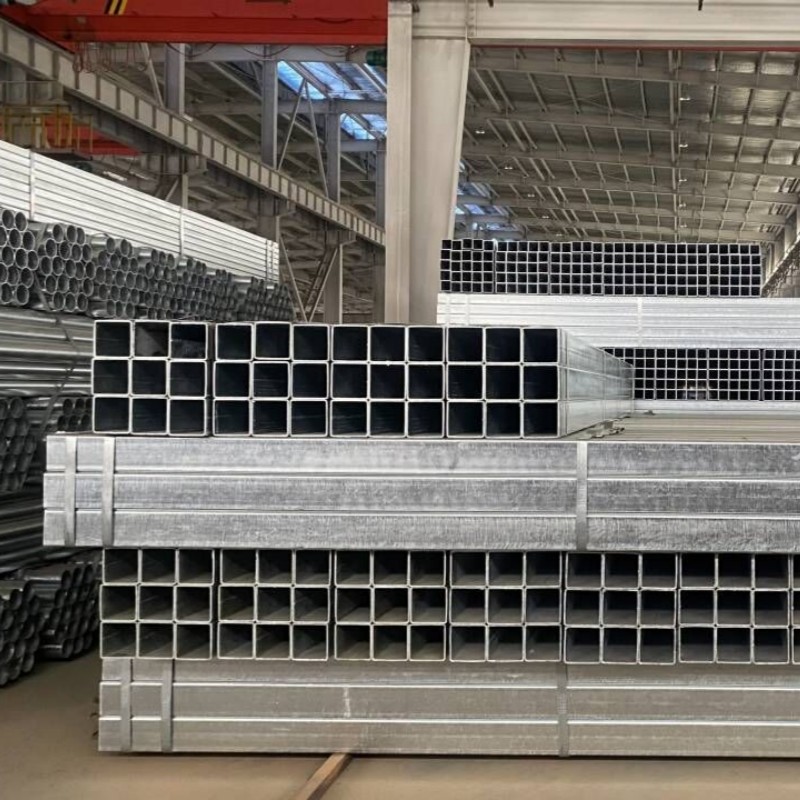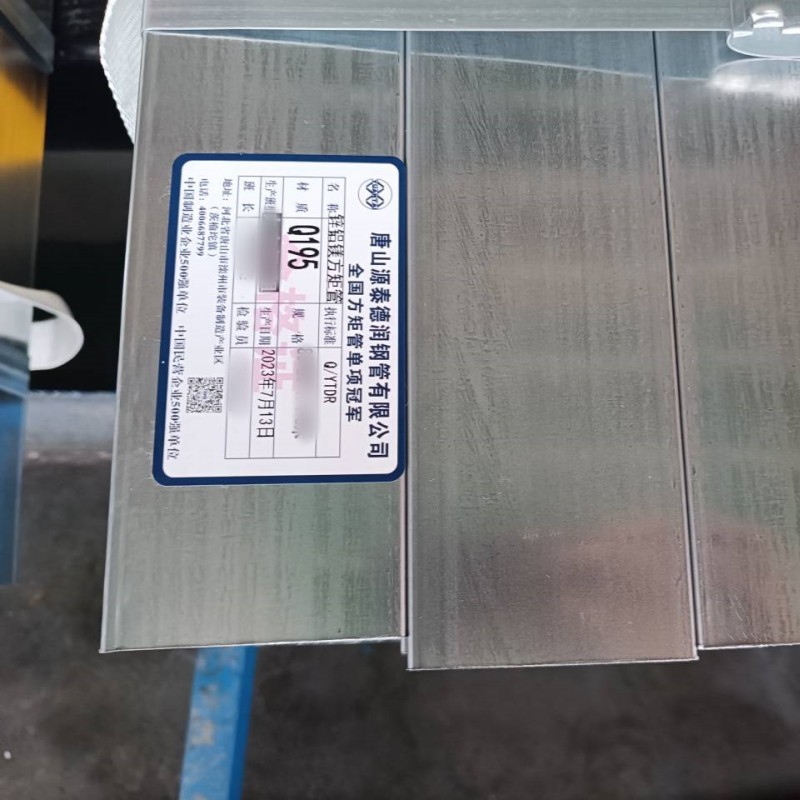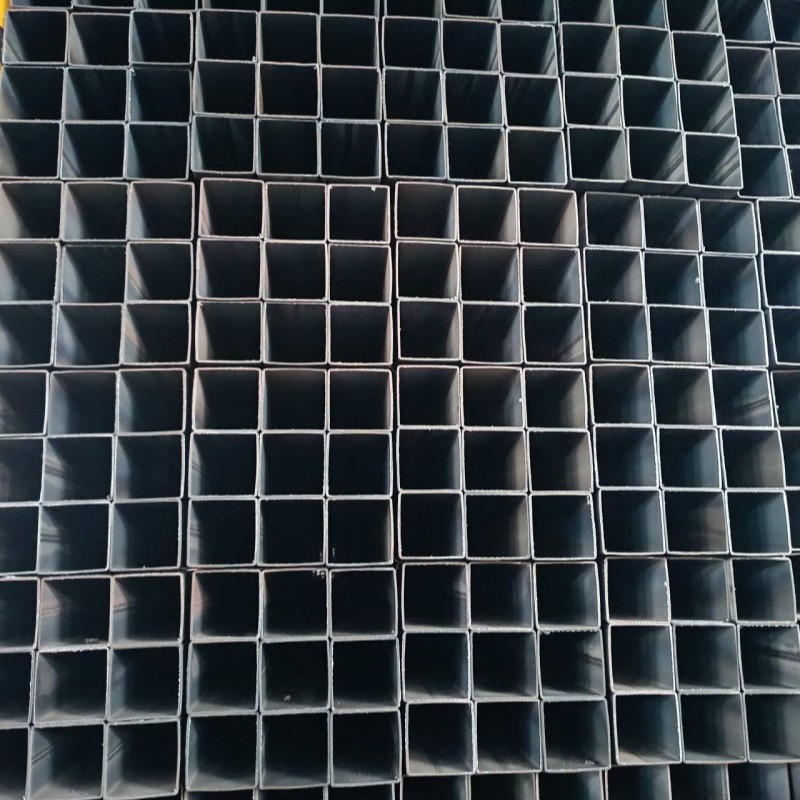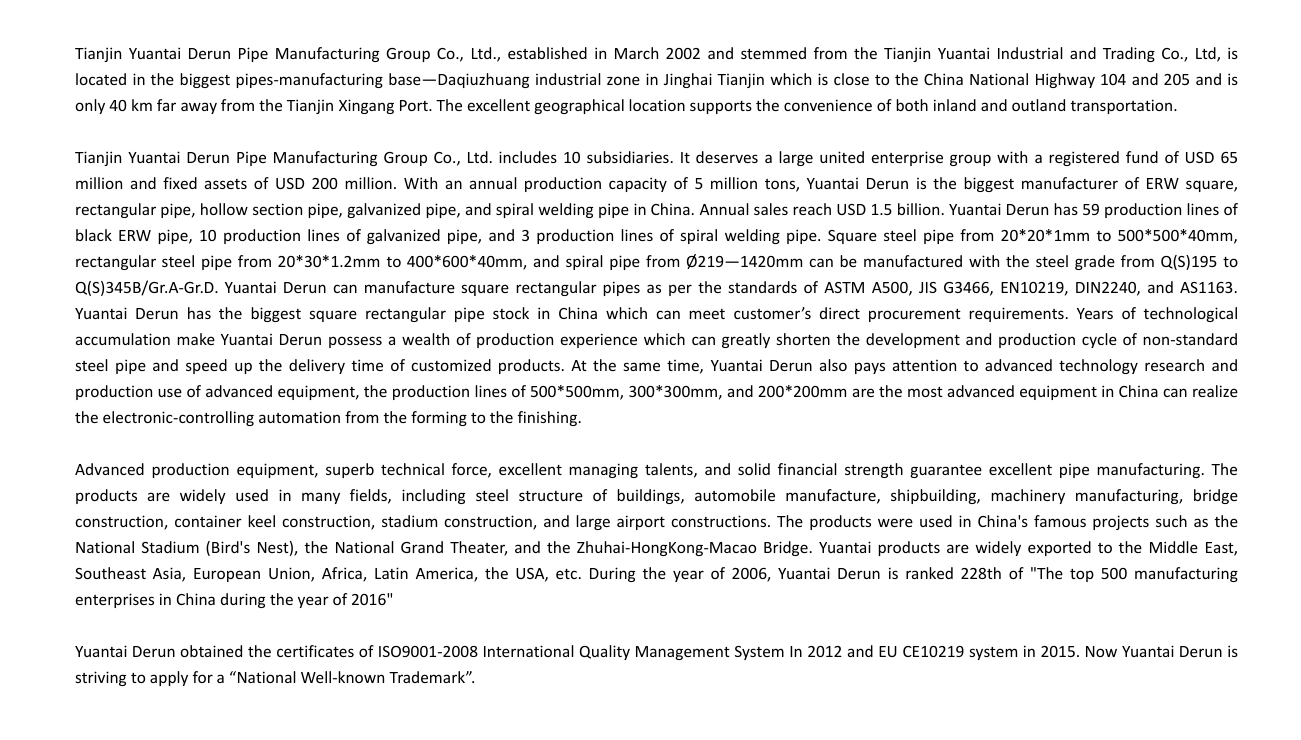

Square tube: 20×20-200×200mm
Rectangular tube: 20×30-100×200mm
Round pipe: 20-203mm
Thickness: 0.8-3.0mm
Length: 0.5-24M
Product Details:
Outer Diameter | SHS:20×20-200×200mm RHS:20×30-100×200mm CHS:20-203mm |
Thickness | 0.8-3.0mm |
Length | 0.5-24M |
Product material | 51D 52D 53D 300 340 400 420 440 490 570 ASTM A 1046 JIS G 3323-2012 EN10324 |
Coating weight | ZM20~ZM400 |
MOQ | 2-5 Tons |
Payment method | TT/LC |
Delivery time | 7-35 days |
Capacity | 3 million tons/year |
Port of shipment | Tianjin Xingang Port |



The role of each element in the ZAM steel tube
Like high-strength steel, the good corrosion resistance of zinc-aluminum-magnesium is determined by its structure, and the structure is determined by chemical composition and cooling rate. Next, we will discuss the choice of chemical composition of zinc-aluminum-magnesium coating and the composition of each element.
1. The role and influence of magnesium
The role of magnesium is firstly to improve the corrosion resistance, which has been fully analyzed before; secondly, adding a little 0.1% magnesium in the plating bath can improve the wettability of the strip steel in the plating solution and reduce the surface tension of the plating bath, to reduce the occurrence of missing plating defects, because the oxide of magnesium is very not dense, and basically exists in a very loose state. This seems to be somewhat complementary to the characteristics of aluminum, which is of great significance for the production of high-strength steel with higher alloy content by using coatings with higher aluminum content. However, in the zinc-aluminum-magnesium plating solution, the content of magnesium is relatively high, and the problem that the magnesium oxide is not dense will bring a series of side effects, which becomes a major difficulty in the production of hot-dip galvanized aluminum-magnesium products.
2. The role and influence of aluminum
First of all, adding aluminum on the basis of galvanizing can significantly improve the corrosion resistance and heat resistance, which is also the case in the zinc-aluminum-magnesium coating; secondly, adding a small amount of aluminum during galvanizing can inhibit the zinc liquid from interacting with iron. The reaction, thinning the Fe-Zn compound layer; third, aluminum can inhibit the limitation of magnesium oxidation, aluminum oxide is very dense and can reduce the impact of magnesium loose oxide, and if it is just right, make the aluminum-magnesium Oxide can form a film, causing defects in the product.
Among these three characteristics, the first one has only advantages and no disadvantages, but the second and third are double-edged swords. Like magnesium, aluminum is present in high concentrations in zinc-aluminum-magnesium baths. On the one hand, aluminum inhibits the reaction between zinc and iron, but the reaction between aluminum and iron is more intense, which becomes the main contradiction; on the other hand, the problem that aluminum is extremely easy to oxidize will also bring a series of problems, which also become the main problem in the production of zinc, aluminum and magnesium products.
Our company:

